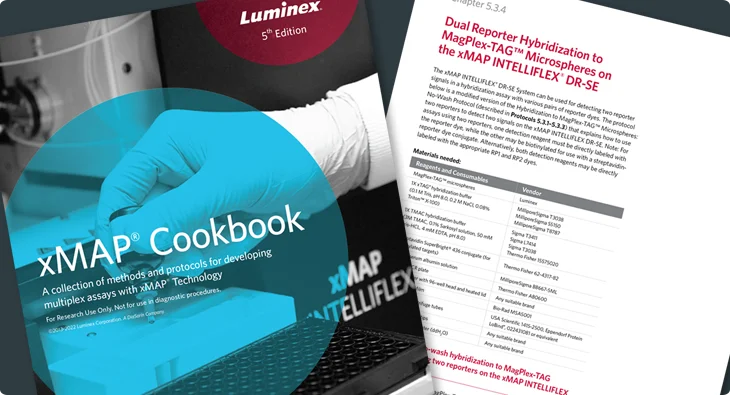New Year, New Cookbook: Check Out This Great Resource for xMAP® Technology Users
The fifth edition of the xMAP Cookbook offers new protocols and application examples, with additional tips, tricks, and insight from our experts
We’re delighted to announce the latest edition of our xMAP® Cookbook is live and available for download! As a vetted collection of methods and protocols for developing multiplex assays on the xMAP platform of your choice, the Cookbook is a valuable resource for xMAP veterans and new users alike.
xMAP Technology has been a game-changer for scientists around the world, but for those who are unfamiliar with it, we try to provide a primer on multiplexing and how it can benefit scientists across research fields. As a bead-based multiplexing tool, it can be used for both proteomic and genomic applications, and xMAP in particular helps reduce sample and reagent volumes while generating more information.
With xMAP, you can analyze up to 500 targets in a single run
For technology that’s so different from standard, single-analyte immunoassays, we’ve found that our customers really like to have a guide showing them the many different ways it can be used. That’s why we created the original xMAP Cookbook back in 2013. Since then, we’ve regularly updated this handy collection of protocols to include updated tips and tricks based on what we see in our labs, but also what our customers are doing in the field.
All xMAP Cookbooks include detailed instructions for designing, creating, optimizing, and validating your xMAP assays, plus assay development guides for various applications, a detailed list of common xMAP buffers, and a comprehensive list of equipment needed to run xMAP assays.
In our just-released fifth edition, we’ve added some exciting new material—plus tips and protocols for our newest xMAP platform. Here’s a quick look at some of the highlights:
- Examples of dual reporter applications for use with our new xMAP INTELLIFLEX® System
- Relative reporter intensities for both reporter channels
- New protocols for developing assays for pneumococcal polysaccharides
- Dried blood spot extraction protocol
Download the 5th edition of the xMAP Cookbook today, or, if you want more info about xMAP Technology before you download, visit our website!
For Research Use Only. Not for use in diagnostic procedures.


